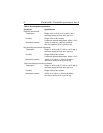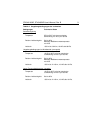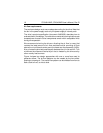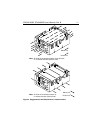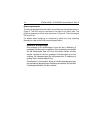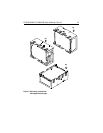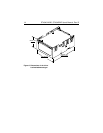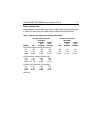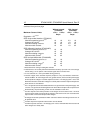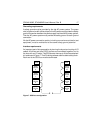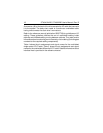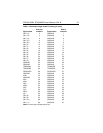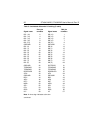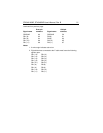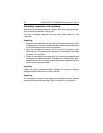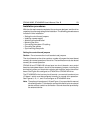
16 ST43401N/ND, ST43402ND User’s Manual, Rev. B
continued from previous page
Without Internal With Internal
Terminator Terminator
Maximum Current Limits +5V
5,7
+12V
5,7
+5V
5,7
+12V
5,7
Amps Amps
Regulation ± 5%
3,4,8,9
SCSI single-ended interface (ST43401N)
Maximum operating current
1,2,6
1.9 1.8 2.3 1.8
Average idle current
1
1.8 1.8 1.9 1.8
Maximum starting current
1,2
1.9 4.5 2.3 4.5
Maximum seek current
2
1.9 3.2 1.9 3.2
SCSI differential interface (ST43401ND)
Maximum operating current
1,2,6
1.9 1.8
Average idle current
1
1.8 1.8
Maximum starting current
1,2
1.9 4.5
Maximum seek current
9
1.9 3.2
SCSI dual-port differential (ST43402ND)
Maximum operating current
1,2,6
2.3 1.8
Average idle current
1
1.9 1.8
Maximum starting current
1,2
2.3 4.5
Maximum seek current
2
2.2 1.8
1
Measured with an average reading DC ammeter.
2
Instantaneous +12V current peaks will exceed these values by up to 0.8A. The +12V average
current during a 15 ms portion of the actuator signal does not exceed 4.0A.
3
A ±10% tolerance on +12V is permissible during power-up.
4
Inclusive of ripple, noise, transient response (except for +12V), load variation, and environ-
mental conditions. An overvoltage of the +5V (greater than 6V) must cause the power supply
to interrupt all DC voltages. Transient response assumes +12V changing from 1.0A to 7.2A
within 200 microsecs and all other voltages at a steady state.Transient response frequencies
above 30 kHz are now allowed.
5
The +12V ground return must be isolated from the +5V ground return in the power supply. The
+5V and +12V ground are shorted together in the drive. Where multiple units are powered on
simultaneously, the peak starting current must be available to each drive.
6
The drive requires overcurrent protection on all voltages. An overcurrent on the +12V must
cause the power supply to interrupt all DC voltages. Overcurrent on the +5V must reduce the
output current to zero and interrupt all DC voltages.
7
All voltages must meet specifications within 100 msecs after the first voltage reaches 10% of
its specified value.
8
Transient response frequencies above 30 kHz are not allowed.
9
Transient response assumes +12V changing from 1.0A to 7.2A within 200 microsecs and all
other voltages at a steady state.



